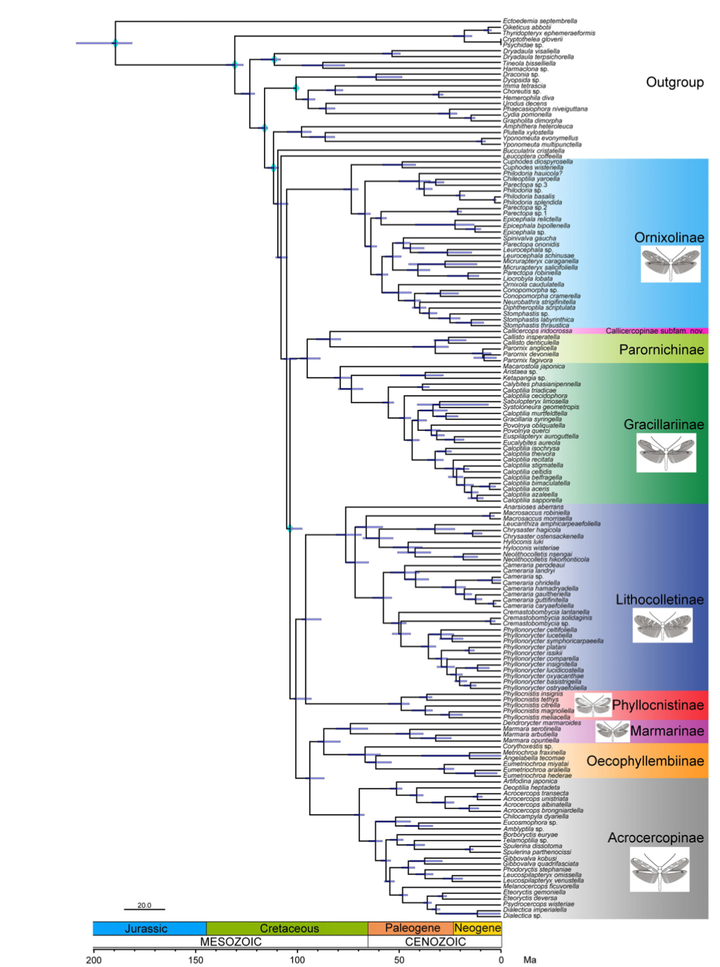Phylogeny of gracillariid leaf-mining moths: evolution of larval behaviour inferred from phylogenomic and Sanger data
 Image credit: X. Li
Image credit: X. LiAbstract
Gracillariidae is the most taxonomically diverse cosmopolitan leaf-mining moth family, consisting of nearly 2000 named species in 105 described genera, classified into eight extant subfamilies. The majority of gracillariid species are internal plant feeders as larvae, creating mines and galls in plant tissue. Despite their diversity and ecological adaptations, their phylogenetic relationships, especially among subfamilies, remain uncertain. Genomic data (83 taxa, 589 loci) were integrated with Sanger data (130 taxa, 22 loci), to reconstruct a phylogeny of Gracillariidae. Based on analyses of both datasets combined and analyzed separately, monophyly of Gracillariidae and all its subfamilies, monophyly of the clade “LAMPO” (subfamilies: Lithocolletinae, Acrocercopinae, Marmarinae, Phyllocnistinae, and Oecophyllembiinae) and relationships of its subclade “AMO” (subfamilies: Acrocercopinae, Marmarinae, and Oecophyllembiinae) were strongly supported. A sister-group relationship of Ornixolinae to the remainder of the family, and a monophyletic leaf roller lineage (Callicercops Vari + Parornichinae) + Gracillariinae, as sister to the “LAMPO” clade were supported by the most likely tree. Dating analyses indicate a mid-Cretaceous (105.3 Ma) origin of the family, followed by a rapid diversification into the nine subfamilies predating the Cretaceous–Palaeogene extinction. We hypothesize that advanced larval behaviours, such as making keeled or tentiform blotch mines, rolling leaves and galling, allowed gracillariids to better avoid larval parasitoids allowing them to further diversify. Finally, we stabilize the classification by formally re-establishing the subfamily ranks of Marmarinae stat.rev., Oecophyllembiinae stat.rev. and Parornichinae stat.rev., and erect a new subfamily, Callicercopinae Li, Ohshima and Kawahara to accommodate the enigmatic genus Callicercops.